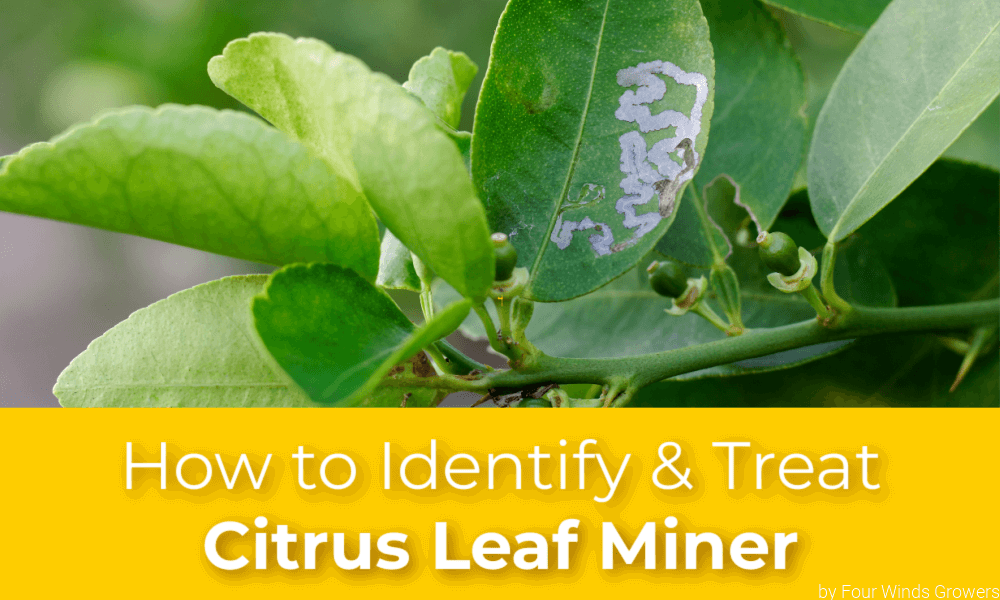The citrus leaf miner is a common garden pest that thrives in the tender flush of the evergreen citrus trees. The squiggly lines are an indication of the tunnels that the citrus leaf miner larvae makes as it tunnels its way through a leaf.
Citrus leaf miner moths are attracted to the new flush of citrus trees. These leaves make for the perfect larvae food but once a leaf has matured and hardened, the leaf is no longer tender enough to provide the ideal site for the moth to lay its eggs and larvae to feed. Any pruning will stimulate new growth, so avoid unnecessary removal of growth during the time when the adult leaf miner is active.
Temperatures between 70 and 85 degrees and a slightly high humidity provide the ideal environment for the adult citrus leaf miner. Removal of slightly damaged leaves is not advised because they are still producing food for the tree. Avoid overfeeding your citrus trees during the summer and fall, as this will cause a growth spurt of tender tasty leaves. Remove rapidly growing shoots (water sprouts) during this time to reduce potential feeding and egg laying points.
Beneficial insects will be attracted to the Leaf Miner larvae, if enough are present they will control the problem. If you use a pesticide, the beneficial insects will be affected also. Leaves damaged by leaf miners are unsightly, but if the infestation is light it may be better not to spray. You can see the larvae inside the leaf, and squish them with your fingers.
Solutions:
Citrus leaf miner damage is almost completely cosmetic and won't kill a well-established tree. While unsightly, the damaged foliage should be left on the tree as removing this growth will encourage more fresh leaves for the larvae to feed on. With this in mind it is best not to prune your citrus tree while dealing with leaf miners and rather wait until spring to do any necessary pruning. Again, you can always squish the larvae within the leaves themselves and treat them with the following.
There are a variety of treatments on the market with the active ingredient spinosad have proven themselves quite effective against the active larvae infestations. It can be toxic for honeybees if they are exposed to the product before it has dried. An evening application would ensure that honeybees would not be affected. A quick google search for "spinosad spray" will bring up a variety of organic and conventional solutions for you to choose from. Pick your favorite brand and apply according to the instructions on the container to ensure the safest and most effective results.
Imidacloprid, while highly effective, is a chemical treatment that we do not advise using as it is very toxic to honeybees.
Shop Citrus Trees
Check out our Citrus Growing Tips for more information!
Protect your fruit trees from the hot summer sun, winter cold, pests, and rodents with Plant Gaurd tree paint and foliar spray.
Get in the know about HLB(Huanglongbing / Citrus Greening Disease) and help save your community's citrus. Only source citrus trees from reputable growers.
Authors: Israel Osuna & Kat E.
Source: http://ipm.ucanr.edu/PMG/PESTNOTES/pn74137.html




